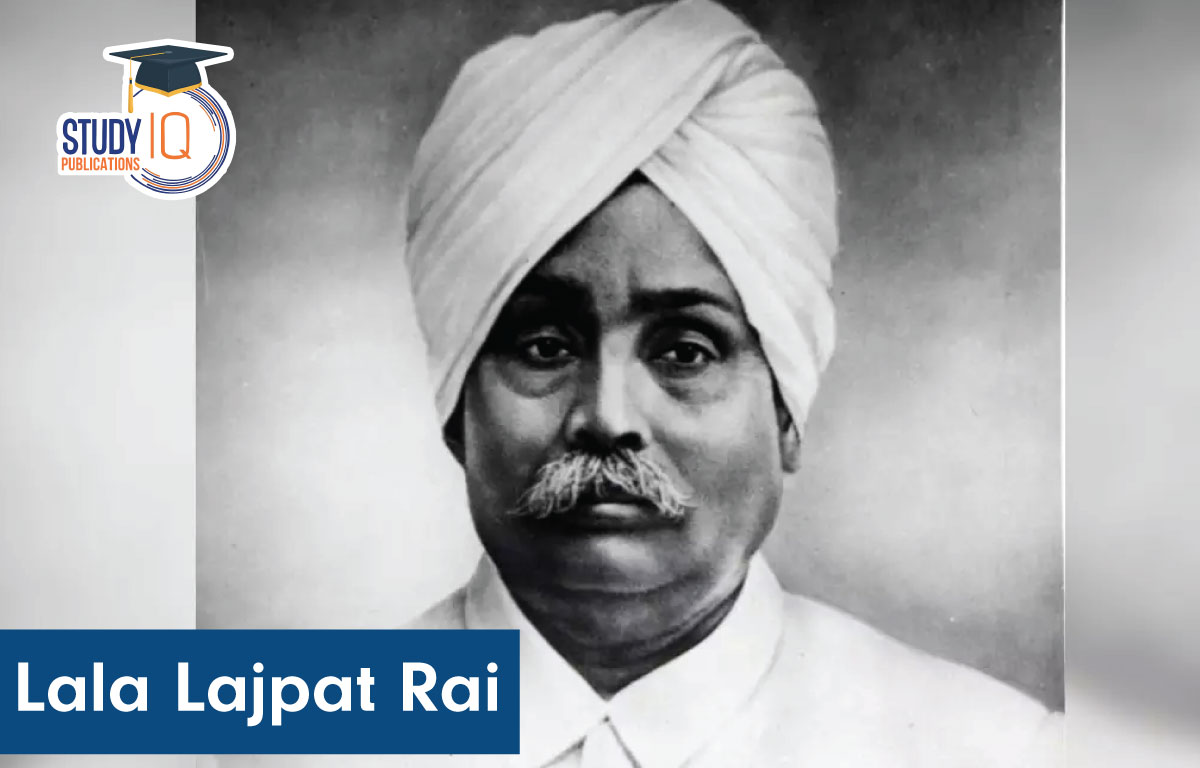Table of Contents
Lala Lajpat Rai is a Freedom Fighter in India’s Independence was born on 28 January 1865 in Jagraon, Ludhiana district, Punjab, British India. Munshi Radha Krishan Agarwal is a teacher of Urdu and Persian Government Schools. His mother’s name was Gulab Devi Agarwal. He was married to Radha Devi Aggarwal. They have three children, two sons and one daughter. Pyarelal Aggarwal and Amrit Rai Aggarwal were his sons. His daughter’s name was Parvati Aggarwal.
Lala Lajpat Rai Birth Anniversary
Today marks the birth anniversary of Lala Lajpat Rai, one of India’s most prominent freedom fighters, often called ‘Punjab Kesari’ (the Lion of Punjab). Born on January 28, 1865, in Dhudike, Punjab, Lajpat Rai was a visionary leader whose contributions to India’s fight for independence remain indelible.
Lala Lajpat Rai Biography
- He was a well-known nationalist figure who was crucial to the independence movement in India.
- During the independence movement, he played a key role in the renowned “Lal Bal Pal” firebrand trio.
- He was known as the “Lion of the Punjab” or “Punjab Kesari” for his passionate brand of patriotism and forceful vocalism against British authority.
- He also started the Punjab National Bank from scratch.
- He established the Hindu Orphan Relief Movement in 1897 in an effort to prevent Christian missions from gaining custody of these kids.
- He was seriously hurt when the protestors protesting Simon Commission’s arrival were struck by a police lathi, and he later passed away from his wounds a few days later.
Read about :Freedom Fighters of India
Lala Lajpat Rai Education
Lala’s mother was a devout woman who raised her kids with high moral standards. His family’s ideals gave Lajpat Rai the freedom to practice other religions and ideologies. His father was a teacher at the Government Higher Secondary School in Rewari, where he completed his elementary education. In order to study law, Lajpat Rai enrolled in the Government College in Lahore in 1880. He interacted with future liberation fighters and patriots like Lala Hans Raj and Pandit Guru Dutt while in college. He completed his legal education at Government College in Lahore before beginning his legal career in Hissar, Haryana. He swore a vow to liberate his country from foreign rule since he had always wanted to serve his country. He was born in 1884 and his father moved to Rohtak. In 1877, he wed Radha Devi. The family relocated to Hissar in 1886, when he began to practise law. He took part as a delegate in the National Congress’s annual sessions in 1888 and 1889. He relocated to Lahore in 1892 to represent clients before the High Court.
Read about: Lal Bahadur Shastri
Lala Lajpat Rai Ideas of Nationalism
Lala Lajpat As an avid reader, everything Rai read left a lasting impression on his thoughts. The nationalism and patriotism espoused by Giuseppe Mazzini, the leader of the Italian revolution, left a lasting impression on him. Lalaji was influenced by Mazzini to embrace the revolutionary approach to achieving freedom. Along with other well-known figures like Bipin Chandra Pal, Aurobindo Ghosh from Bengal, and Bal Gangadhar Tilak from Maharashtra, he started to recognize the drawbacks of the moderate politics that many members of the Indian National Congress favored. They began arguing for total independence, or “Purna Swaraj,” and expressed their vehement opposition to the Congress’ call for a gradual transition to dominion status. In terms of his personal beliefs, he was a strong proponent of interfaith cooperation, but he did not agree with the Congress leaders’ tendency to compromise Hindu interests in order to please the Muslim wing of the party. Lala was one of the few leaders who understood the challenges of a unified anti-colonial movement and a potential catalyst for tensions between the nation’s Hindus and Muslims. On 14 December 1923, he suggested in The Tribune “a definite partition of India into a Muslim India and non-Muslim India,” which sparked intense debate.
Lala Lajpat Rai Political Career
Lajpat Rai gave up his legal career to devote all of his time and energy to rescuing his country from the British Empire. In order to stress the horrific character of British rule in India, he understood the necessity of outlining the situation in the Indian Freedom struggle to important nations throughout the world. In 1914, he visited Britain, and in 1917, he visited the USA. He established the Indian Home Rule League of America in New York in October 1917. From 1917 until 1920, he resided in the United States. Lajpat Rai was called to lead the special session of the Congress in Calcutta in 1920 after his return from America (now Kolkata). In Punjab, he organised ferocious protests against the British in response to their terrible conduct at Jallianwallah Bagh. Gandhi jumped into action as the movement’s leader in Punjab when it was established in 1920. Lajpat Rai disagreed with Gandhi’s decision to put the campaign on hold following the Chauri Chaura event, and he later founded the Congress Independence Party. In 1929, the Simon Commission went to India to talk about constitutional changes. The fact that the Commission was made up entirely of British representatives severely incensed the leaders of India. He led the first wave of protests that broke out across the nation.
Read about : Famous Indian Personalities and their Nicknames
Lala Lajpat Rai Death
He led a nonviolent demonstration on 30 October 1928, to protest the Simon Commission’s arrival in Lahore. James A. Scott, the superintendent of police, stopped the march and instructed his officers to “lathi-charge” the protesters. Lajpat Rai was specifically targeted by the cops, who struck him in the chest. This action severely injured him. He passed away on 17 November 1928, from a heart attack. His supporters blamed the British directly and pledged to exact revenge on them. Scott was to be assassinated by Chandrasekhar Azad, Bhagat Singh, and other conspirators, but the revolutionaries mistakenly shot J.P. Saunders as Scott.
Read about: Dandi March
Lala Lajpat Rai and his role as Influencer
Rai was not only the Indian Nationalist Movement’s heavyweight commander, but he was also widely respected for his nationalism and patriotism-related beliefs. He sparked the dormant patriotism in the hearts of the young men of his generation. Following his example, young men like Chandrasekhar Azad and Bhagat Singh were inspired to dedicate their lives to the cause of the independence of their Motherland.
Lala Lajpat Rai Legacy
In addition to his leadership skills, He left a lasting influence on his countrymen by making a name for himself in a variety of industries, including healthcare, business, and education. He supported Dayanand Saraswati and was instrumental in founding the nationalist Dayanand Anglo-Vedic School. He started the process of creating a bank, which later became the “Punjab National Bank.” He managed the creation of the Gulabi Devi Chest Hospital, a tuberculosis facility for women, in 1927 and established a trust in his mother Gulabi Devi’s honor.


 AI Maker Labs: A Promise to build AI in ...
AI Maker Labs: A Promise to build AI in ...
 Daily Quiz 15 April 2025
Daily Quiz 15 April 2025
 How RBI Responded To Global Trade War Ch...
How RBI Responded To Global Trade War Ch...





















